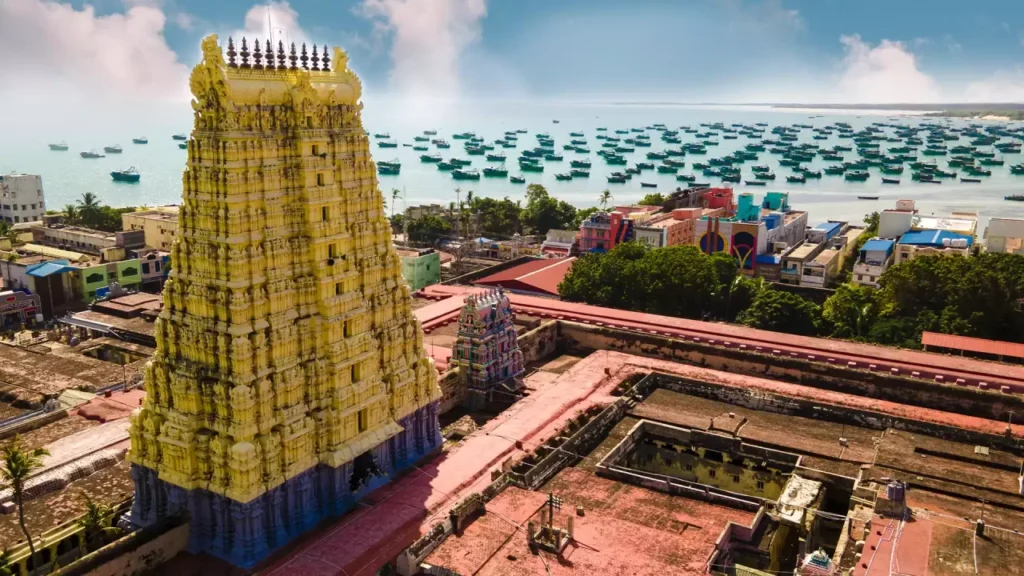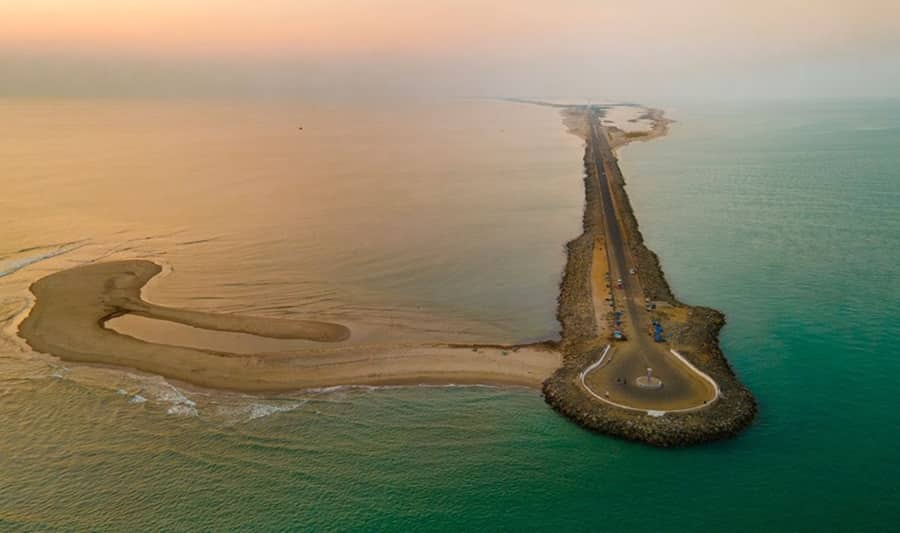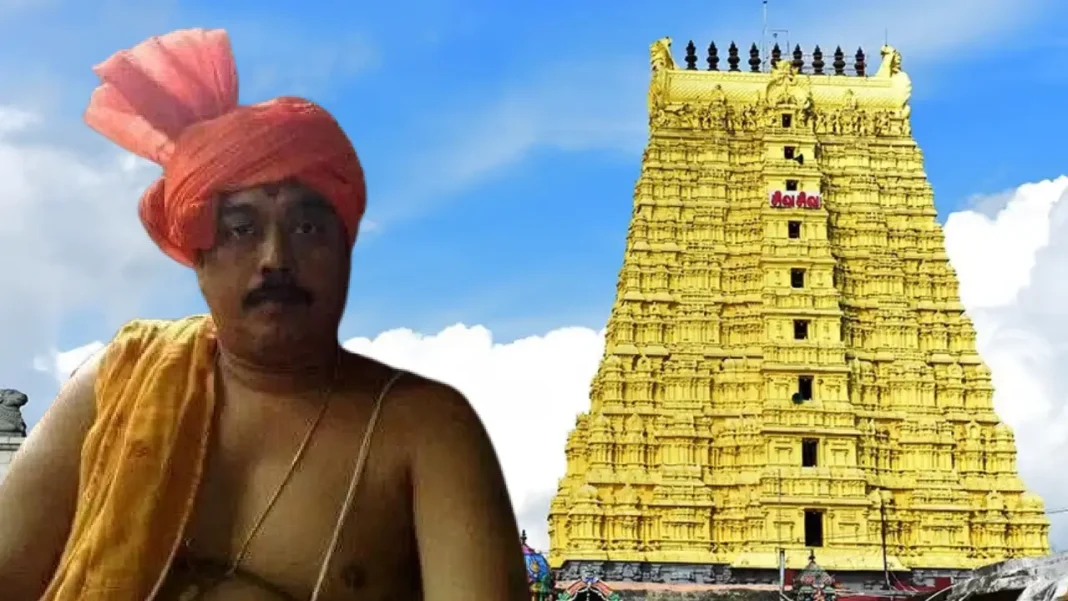S.B.Madhu
Rameswaram Temple, located in the Ramanathapuram district of Tamil Nadu, is one of the four great Hindu pilgrimage centers (Char Dham) in India. The other three are Badrinath in the north, Puri Jagannath Temple in the east, and Dwarka in the west. Among these four, Rameswaram is the only Shiva temple. It is also one of the twelve Jyotirlinga temples in India.
Rameswaram town is situated on Pamban Island, which is separated from mainland India by the Pamban Channel. This island lies just about 50 kilometers away from Mannar Island in Sri Lanka. The island, also known as Rameswaram Island, is connected to the Indian mainland by the world-famous Pamban Bridge.

This sacred place has deep connections with the epic Ramayana. According to the legend, when Ravana, the king of Lanka, abducted Sita, Lord Rama built a bridge from India to Lanka to rescue her. It is believed that Rama started constructing this bridge from Rameswaram itself.
With the help of his Vanara (monkey) army, Rama built this bridge to cross over to Lanka. In the Ramayana, this event is known as Setu Bandhanam. The remnants of the structure believed to be this ancient bridge are now known as Rama’s Bridge or Ram Setu.
The place where Rama is believed to have marked the starting point of the bridge with the tip of his bow is called Dhanushkodi. After defeating Ravana, Rama returned to India, and it is said that he broke the bridge with the tip of his bow at this spot, giving the place its name — Dhanushkodi (meaning “end of the bow”).

To atone for the sin of killing Ravana, who was a Brahmin, Rama decided to install and worship a Shivalinga as advised by Sage Agastya. He sent his devoted follower Hanuman to Mount Kailash to bring a Shivalinga. However, as Hanuman did not return in time for the auspicious moment of the ritual, Sita Devi made a Linga out of sand and the worship was performed using that.
When Hanuman returned with the Shivalinga from Kailash, he was saddened to see that the ritual had already been completed. To console him, Rama installed Hanuman’s Shivalinga next to Sita’s and declared that Hanuman’s Linga must always be worshipped first. Even today, this practice continues at the temple.
Pilgrims visiting Rameswaram first bathe at the Lakshmana Tirtha. It is believed that bathing at Dhanushkodi, where the Bay of Bengal and the Indian Ocean meet, brings the same spiritual merit as completing the Kashi pilgrimage. Devotees also bring Ganga water from Varanasi to perform Abhishekam on the Shivalinga at Rameswaram, which is considered highly auspicious.
After the main rituals, pilgrims visit Sita Tirtha, followed by Rama Tirtha, a pond whose water is slightly salty. The Rameswaram temple has 22 sacred wells (Tirtha Kunds) inside its premises. The temple priests draw water from each of these wells and pour it over the devotees’ heads for ritual bathing. It is believed that bathing in these sacred waters washes away sins accumulated over past lives.
Rameswaram Temple is truly a holy destination that one must visit at least once in a lifetime.
Among the chief priests of the temple is Venkatesan Thirtha Pandar, originally from Kerala. Along with his temple duties, he also helps Malayali devotees visiting Rameswaram with their pilgrimage needs. His mother hails from Varkala, Thiruvananthapuram. Venkatesan resides near the temple, and Malayali pilgrims visiting for darshan, ancestral rituals, or food offerings (annadanam) can contact him for assistance.
Address:
1/40, South Car Street, Rameswaram
Contact Numbers:
04573-222302, 94438 61715



